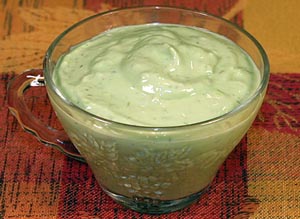
When I moved to Mexico 26 years ago, there were very few supermarkets. In Cholula, there were, and still are, numerous small mom-and-pop stores called miscelanias that crammed a huge variety of inventory into small spaces. And no matter what else they sold, there was always yogurt, occupying what seemed to be a disproportionate amount of space in the tiny refrigerated cases.
The nearest supermarket, 20 minutes away in Puebla, was a veritable treasure chest of yogurt and, as the mega markets continued to proliferate, the yogurt selection seemed to know no bounds. Today, in one giant chain store, yogurt takes up an entire aisle. Flavored, plain, “light” and fruit-at-the-bottom yogurts, along with kids’ yogurts in miniature containers, and even yogurt with packets of cereal to mix in, all attract a crowd of customers.
There are also “drinkable” yogurts, called yogurt para beber, and small containers of Yakult, a probiotic fermented skimmed milk drink with a high concentration of Lactobacillus casei, said to supply the body with “good” bacteria, thereby promoting digestive health. Packaged in small plastic containers to provide daily doses, Yakult is also sold and delivered door-to-door, and distributors pulling wheeled refrigerated cases can often be seen making the rounds of different neighborhoods. This product is wildly popular in Mexico, and the number of Yakult employees with routes in Cholula is possibly due to the presence of a Yakult plant in nearby Puebla.
The probiotic benefits of yogurt for good digestion have long been known, but now another value of probiotics is being explored as a treatment for depression and anxiety. Doctors at UCLA’s medical school have stated that “some of the contents of yogurt may actually change the way our brain responds to the environment.” Whether or not yogurt is the new Prozac remains to be seen, but its cheery effect on a grumpy digestive system is unquestioned, and I do know that I am a lot happier without below-the-belt cramps than with them.
In Mexico, yogurt was popular long before these studies were done, and certainly before the word “probiotic” became part of the current “healthy living” vocabulary. The same stand in the Cholula market has been selling homemade yogurt for at least those 26 years that I know of, and always in the same three flavors (pecan, peach and strawberry).
The Lebanese population of Mexico, especially concentrated in Mexico City, Puebla and Veracruz, has given us jocoque, a type of thick yogurt from the Middle East, related to Greek yogurt. In these cities, jocoque is found in supermarkets; in other places, it is homemade and frequently used in regional cooking. In Chiautla de Tapia, in the Mixteca Poblana region, we had chicken in a cumin-scented yogurt sauce made with homemade jocoque and dried chiles.
The word yogurt is Turkish in origin, and the food is considered to have first been consumed when milk carried through warm desert climates in containers made from animal stomachs was fermented by the enzymes therein. Yogurt is commonly used in the cooking of Arabs, and the Moors — Muslim Arabs that invaded Spain in the eighth century — brought their cuisine, which undoubtedly used yogurt, with them. (The Spaniards, being the culinary connection between the Arab world and Mexico, brought several Moorish influenced foods and food preparations with them, including aguas frescas, the pilaf style of cooking rice, the use of aromatic spices, and such now common Mexican dishes as albóndigas and marzipan.)
And it was in Spain that the industrialized production of yogurt was begun in Barcelona in 1919, when Isaac Carasso introduced a product called Danone, named for his son Danial. Danone, called Dannon in other countries, has long been the most popular brand of yogurt in Mexico.
A common Mexican breakfast consists of fresh fruit with yogurt and honey, but yogurt is also used in smoothies, dips, and savory sauces. To go beyond the morning yogurt with fruit, try the following recipes and add some digestive happiness to your diet.
- Mexican yogurt avocado dip: Dip de yogurt con aguacate
- Mexican chicken in yogurt sauce: Enjococado
- Mexican vegetable salad with yogurt dressing: Ensalada de verduras con aderezo de yogurt



I make my yogurt with “bulgaros,” they look like popcorn. I cannot find any information about this type of yogurt (bacteria), In the US they sell you the bacteria to make yogurt, but in Mexico we actually used the “bulgaros”. I need more information about the probiotic value of this type of yogurt. It has to be drained almost daily.